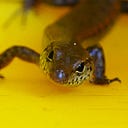The Imperial System and the Tropical Hydrangea
Unexpected connections…
I was about to leave when my friend asked, ‘Have you seen the Tropical Hydrangea?’
I hadn’t. Hydrangeas are staples of older, long-established gardens and they seem to have gone out of fashion, displaced by native species such as Grevillea and Melaleuca. They grow well on the Atherton Tablelands, where the red Pin Gin soils are acid, tinting the flowers mauve to pale blue. I wasn’t familiar with species from the tropics, only the Japanese Hydrangea macrophylla, with its big leaves and ever bigger bunches of flowers.
The Tropical Hydrangea, it turns out, is tropical but is not a hydrangea.
(My war against common names continues.)
Native to eastern Madagascar, the Tropical Hydrangea or, more accurately, Dombeya wallichii, is a garden plant for warmer areas. It belongs to Malvaceae, a family that includes hibiscus, cotton, mallows — and a genus called Bastardia (now sadly synonymised with Abutilon) — but not hydrangeas. Not even close.
Through a series of peculiar events, the Tropical Hydrangea is linked to the USA’s use of Imperial measurements.
